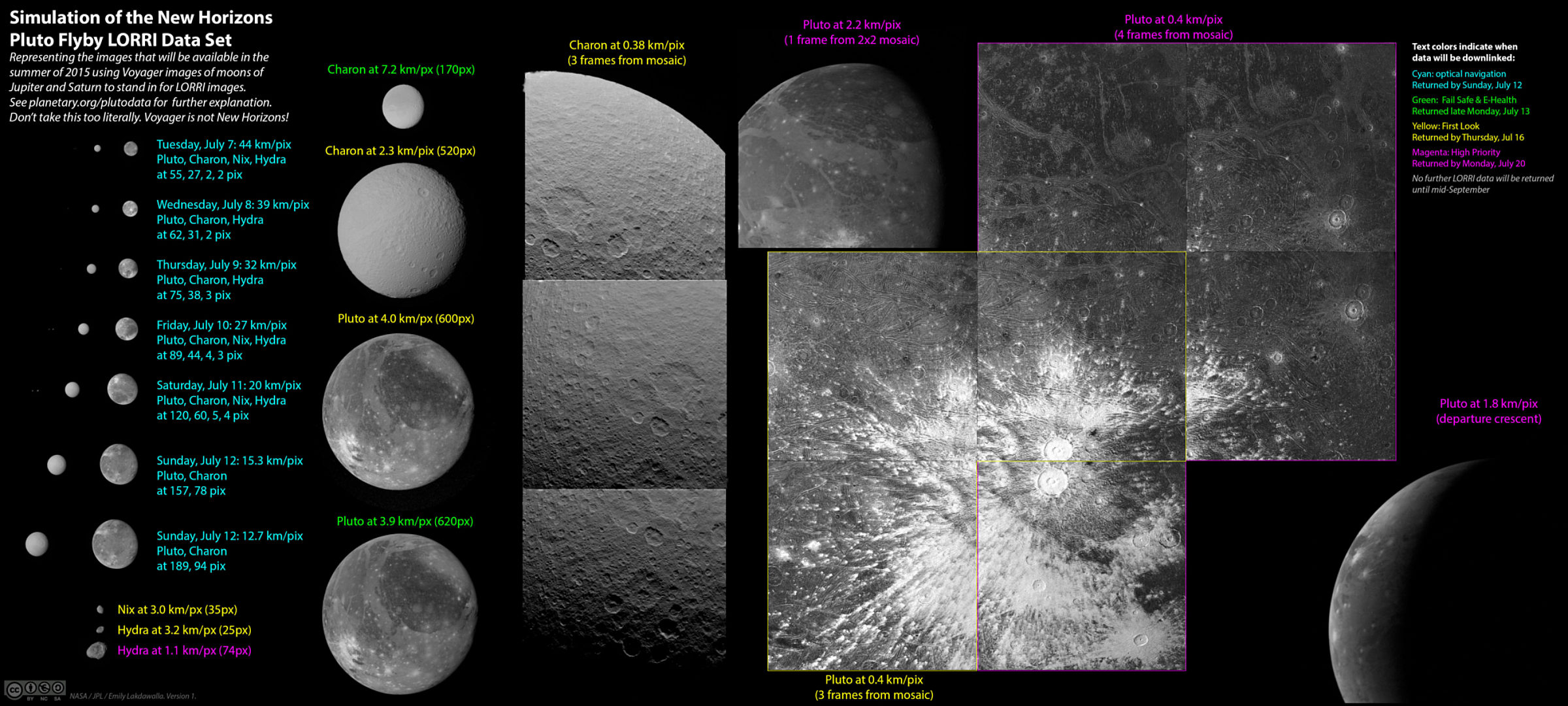Bruce Murray Space Image Library
Simulation of the New Horizons Pluto flyby LORRI data set

In this comparison, Jupiter's moon Ganymede stands in for Pluto. Ganymede was chosen because it has a high-contrast surface, like Pluto. Saturn's moons Tethys and Rhea stand in for Charon, which has a lower-contrast surface. Saturn's moons Janus and Hyperion stand in for Nix and Hydra, respectively.
The full-disk images have been resized so that their disks span a similar number of pixels to the expected LORRI images of Pluto, Charon, Nix, and Hydra when the image is displayed at its full resolution.
The images in which Ganymede and Rhea, standing in for Pluto and Charon, more than fill the frame have not been resized to simulate the exact resolutions of the LORRI image mosaics; they are meant to represent the kinds of images we can expect to see in terms of how much of the frame they fill, but Pluto and Charon are expected to look quite different from this when New Horizons sees them up close, so there was no point in attempting such precision.


 Explore Worlds
Explore Worlds Find Life
Find Life Defend Earth
Defend Earth

